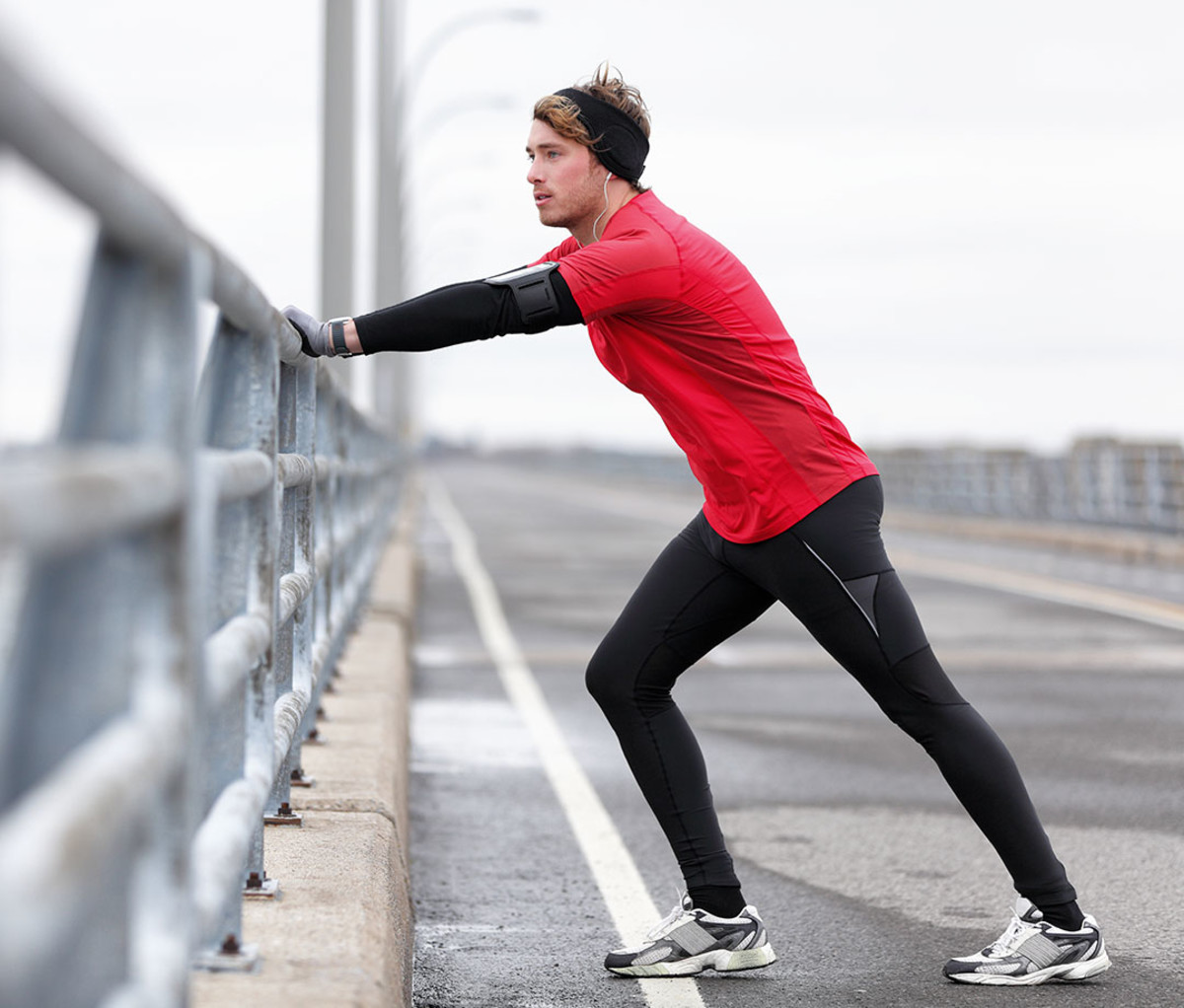Athletes and serious gymgoers know: Rehab is the backup plan. The best way to bounce back from injury is to avoid it in the first place. We’re talking about prehab… doing those stretches and strengthening and stabilizing routines often seen in PT offices before you get injured.
Research in the British Journal of Sports Medicine found that preventive strength training cut overuse injuries in half. Another study found that adding hamstring-strengthening moves helped soccer players decrease their risk of hamstring strains and tears by 51 percent. Doing some of this preventative work is especially important if you do the same workout without much cross-training; that can leave you with imbalances and weaknesses (i.e. making you more vulnerable to getting hurt).
“Most people view traditional physical therapy as a tool in recovery after a specific injury,” says Jason Moy, a physical therapist with Tru Whole Care in New York City. “But preventative PT can improve muscular performance and minimize your risk of injury by improving balance, postural awareness, muscle flexibility, strength, and endurance.”
Here are some essential prehab moves to stretch, strengthen, and improve your stability—not to mention help you sidestep some of the most common aches and pains in the process. Add them to the beginning of your workout for a dynamic warmup, or do a little each morning to help you move better throughout the day.
1. Wall Hip Flexor Stretch
How: Kneel close to a wall. Step right foot forward so thigh is parallel to floor. Lift left foot behind you, resting on top of the floor against the wall. You’ll feel the stretch in your left quad and hip flexor.
Why: If you’ve got lower back pain, this move is a must. “The chief reason for lower-back pain in most men is limited hip mobility, particularly in the front of their hips caused from prolonged sitting,” says Gurney. “This stretch is an absolute game-changer.”
2. Side-Lying Dumbbell Rotation
How: Lie on your left side, holding a dumbbell in your right hand. Place a small, rolled towel between your upper right arm and side; hug it with right elbow, letting forearm rest across belly. Keeping elbow bent at 90 degrees, rotate shoulder to lift dumbbell. Repeat on opposite side.
Why: “With shoulder issues, the problem is that most men focus on large muscles when lifting—pecs, lats, delts—and neglect their rotator cuff until they have pain,” says Brian Gurney, DPT, C.S.C.S., a trainer, board-certified sports clinical specialist, and physical therapist at BeFit Therapy in New York City. This move targets those smaller muscles you might usually ignore.
3. Wheel Pose
How: Lie on your back with knees bent and feet on the floor. Place your palms on the floor by your ears, fingers pointing toward shoulders. Drive through your feet and push hips up, pressing into hands to bring the crown of your head to the floor. Make sure weight is evenly distributed through your feet and hands equally, then straighten arms and lift head off floor. (Make this move less challenging by lying on a yoga bolster and lifting only as much as feels comfortable.)
Why: It’ll help nix neck pain. “Poor posture and limited mobility in the upper back and thoracic spine are the chief contributors to neck pain,” says Gurney. “The wheel pose reverses the position we’re in while sitting all day and improves posture and shoulder mobility.”
4. Single-Leg Russian Deadlift
How: Stand with feet hip-width apart, holding a dumbbell or kettlebell in right hand in front of left thigh. Shift weight to your left leg. Keeping a slight bend in left knee, hinge at your hips and lean forward, bringing your right leg behind you. Maintain a straight, flat back until your torso is about parallel to the ground—lowering the weight toward the floor. Push through left foot to return to stand. Repeat on opposite side.
Why: Hamstring strains are super-common injuries; this move improves your hamstring strength and lessens stiffness to help prevent them, says Moy.

5. IT Band Stretch
How: Stand with feet hip-width apart. Step left foot across body behind you. Lift left hand overhead and lean to the right until you feel the stretch down the outside of your left thigh. Hold for 30 seconds, then repeat on opposite side.
Why: Moy recommends this stretch to ease IT band syndrome, which could be the cause of your knee pain—especially if you’re a runner.
6. Shoulder Rotation Stretch
How: Stand in a doorway. Place right hand on the doorjamb, then slowly rotate body to the left for 30 seconds. Repeat on opposite side.
Why: Bad posture also contributes to rotator cuff pain, says Moy. This stretch will help you stand up a little straighter.

7. Calf Stretch
How: Stand near a wall and place palms against it, about chest height. Step left foot back. Keeping a bend in right knee and left leg straight, sink into the position until you feel a good stretch in left calf. Hold for 30 seconds, and repeat on opposite side.
Why: Adding this to your routine will help loosen up tightness in your gastrocnemius, says Moy, a two-headed muscle that runs from knee to heel, which tends to contribute to Achilles tendinitis.
from Men's Journal https://ift.tt/2WooOq9
No comments:
Post a Comment